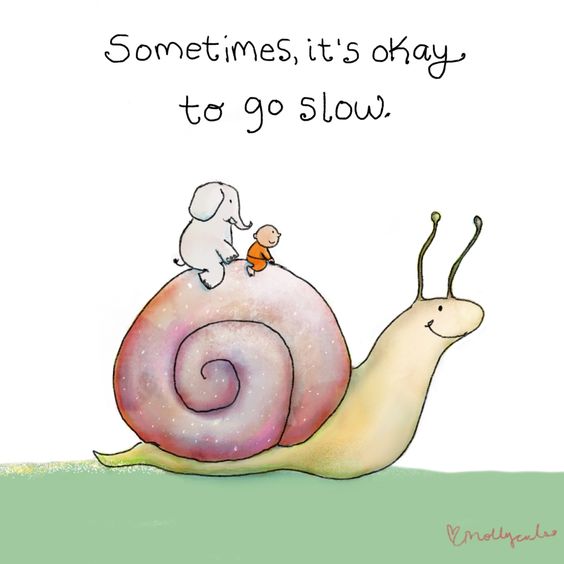This is an Eval Central archive copy, find the original at rka-learnwithus.com.
Updated April 23, 2020: I wrote and shared the following blog post about self-care almost two months ago in late February. Coronavirus was in Seattle at the time, but I’m in New York, and the virus did not feel like a major threat to me or my work. What a difference a couple of weeks would make, when on March 13 my world came to a grinding halt. The allegory I shared in this post two months ago (about riding on an out-of-control horse) no longer feels relevant. As many have already pointed out, Groundhog Day is a more apt story for the time we live in now. On top of that, the threat of the pandemic to the museum profession (not to mention to our health and our social wellbeing) presents a new challenge, different from the wild horse, but similarly distressing. My suggestion before for using Intentional Practice as a form of self-care feels just as, if not more, relevant now.
If you only have a moment, read the bolded statement and items #1-3 below. I think we will all have to find ways to ground and focus our work in ways that are less complicated and more purposeful than we were before coronavirus. Riding a wild horse is not even an option now.

In recent years, self-care has emerged as a compelling idea among museum practitioners. The sentiment is that, like so many in the not-for-profit world, museum workers are deeply passionate about the work they do and too often, they are overworked and feel underappreciated (and underpaid). Burnout is high, and the need to take care of oneself—physically, mentally, and spiritually—is imperative, even though doing so may feel out-of-reach. As a consultant who meets and interacts with many museum professionals across a variety of settings, I can attest to the truth of this. All the time I see museum practitioners who are so busy “doing, doing, doing” that they intermittently and inadvertently lose touch with the spark that drove them to museums in the first place.
I recently read a brief allegory that reminded me of this phenomenon. It goes like this: “I once saw a person riding very fast on a horse. As they rode by me, I yelled, “Where are you going?” The rider turned toward me and yelled, “I don’t know, ask the horse!” The pace at which museum professionals are often expected to do their work, the number of different audiences they are asked to serve, and the amount of programming they are tasked with creating and providing can leave them feeling like a person riding that wild horse.
What if I told you that your museum work could focus on accomplishing one pursuit, and that one pursuit is something you are passionate about and excel at, and that by doing this work, you would make a positive difference in the lives of the audiences you serve? This is the essence of Intentional Practice.
Intentional Practice means that all staff—from up and down and across the organization—take specific actions with the sole purpose of achieving a shared vision of intended impact on the audiences they serve. Transitioning an organization from the status quo to Intentional Practice is slow, as there are many moving parts and often unexpected distractions (insert wrench). But, the beauty of Intentional Practice is its elegant simplicity, so while it is designed for organizations, individuals can also apply Intentional Practice concepts to their personal museum practice.
To return to the title of this post and the bolded statement above, I want to suggest three ways individual museum professionals can use Intentional Practice as a strategy of self-care.
- Prioritize your work to serve two or three audiences (one is even better if you can do that) rather than trying to be all things to all people. Then, focus in on the one specific impact you want to have on those audiences, with “impact” meaning the positive difference you make in the quality of their lives. Write it all down—the audiences and the impact. Post it on the wall across from your desk. Use it to continually remind yourself why you are there and to make decisions about where to put your energies and resources.
- To help you choose the audiences to prioritize and the particular difference you want to make in their lives, ask yourself “Why is working in this museum important to me?”—then ask, “Why is that important?” again, and again. You can do this alone or with a colleague. The idea is to dig deep into what drives and excites you, what you care deeply about, and what gives you joy. Use your passion to make decisions about #1, including helping you say “no” to tasks that move you off course.
- Ask yourself, “What am I really good at? What can I offer in my work that no one else can?”—be honest with yourself; do not respond with what you perceive as the “right answer.” Once you have identified what makes you unique in the workplace, draw from that to make decisions about how to serve your prioritized audiences in ways that make a positive difference in their lives.
Maybe this sounds like a pipe dream, like an impossibility. And I’m not here to tell you it’s easy, especially trying to do it within an organization that has specific ways of functioning and operating. As a first step, simply allow yourself to imagine a world where these three steps I’ve described can be your reality. Make it your intention to return to this aspiration often (remember, post it on the wall to stare at as a reminder) and make decisions based on this aspiration. In this way, you will be practicing self-care, which in turn will bring joy and renewed purpose to your work.
The post Repost: Intentional Practice as Self-Care [During Coronavirus] appeared first on RK&A.